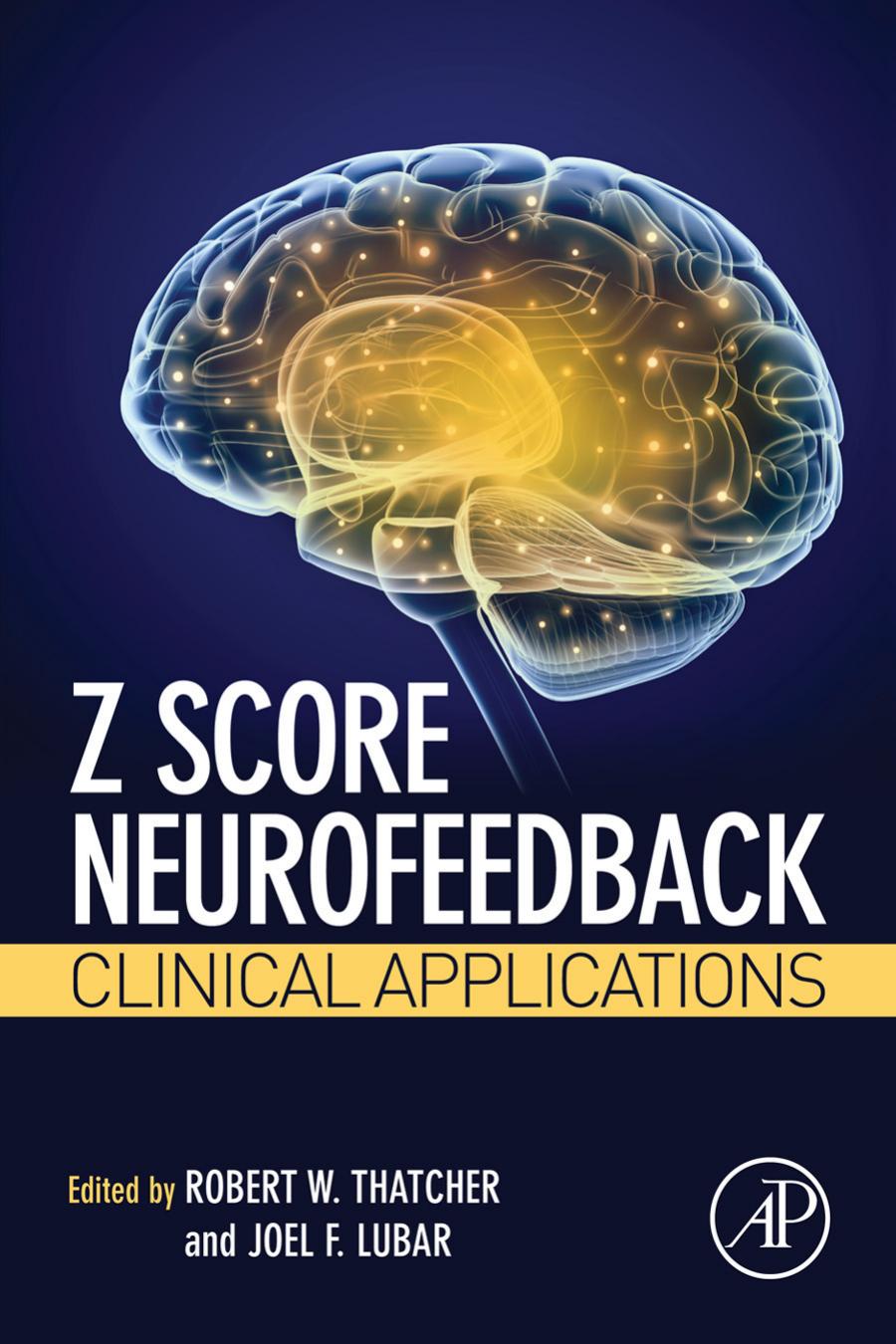Z Score Neurofeedback Clinical Applications 1st edition by Robert Thatcher, Joel Lubar ISBN 0128012919 9780128012918
$70.00 Original price was: $70.00.$35.00Current price is: $35.00.
Instant download Z Score Neurofeedback after payment
Z Score Neurofeedback Clinical Applications 1st edition by Robert Thatcher, Joel Lubar – Ebook PDF Instant Download/Delivery: 0128012919 , 9780128012918
Full download Z Score Neurofeedback Clinical Applications 1st edition after payment

Product details:
ISBN 10: 0128012919
ISBN 13: 9780128012918
Author: Robert Thatcher, Joel Lubar
Neurofeedback is utilized by over 10,000 clinicians worldwide with new techniques and uses being found regularly. Z Score Neurofeedback is a new technique using a normative database to identify and target a specific individual’s area of dysregulation allowing for faster and more effective treatment. The book describes how to perform z Score Neurofeedback, as well as research indicating its effectiveness for a variety of disorders including pain, depression, anxiety, substance abuse, PTSD, ADHD, TBI, headache, frontal lobe disorders, or for cognitive enhancement. Suitable for clinicians as well as researchers this book is a one stop shop for those looking to understand and use this new technique.
- Contains protocols to implement Z score neurofeedback
- Reviews research on disorders for which this is effective treatment
- Describes advanced techniques and applications
Z Score Neurofeedback Clinical Applications 1st Table of contents:
Chapter 1. History and Technical Foundations of Z Score EEG Biofeedback
Introduction
First Use of Gaussian Probabilities to Identify “Dysregulation” in the Brain
Application of Gaussian Probability Distributions to Instantaneous Z Score Biofeedback and Why JTFA Z Scores Are Smaller than FFT Z Scores
Simplification and Standardization
Individualized EEG Biofeedback Protocols
Implementation of the Z Score Biofeedback
JTFA Complex Demodulation Computations
Z Scores and QEEG Normative Databases
Standardization by Amplifier Matching and QEEG Normative Databases
Age Groupings of the Instantaneous Z Score Normative Population
Sampling from the Same Population of Measures of the Human Brain
Appendix
References
Chapter 2. Network Connectivity and LORETA Z Score Biofeedback
Neurotopology
LORETA Linkage Between Structure and Function
Cross-Modal Validation of LORETA
LORETA Symptom Checklist
Intrinsic Connectivity Networks
sLORETA and LORETA Z Scores and the Cross-Spectrum
Network Nodes and Connections
Structural, Functional, and Effective Connectivity
References
Chapter 3. Optimal Procedures in Z-Score Neurofeedback: Strategies for Maximizing Learning for Surface and LORETA Neurofeedback
Schedules of Reinforcement
Learning Curves
Contingency of Feedback
Types of Feedback
Thresholding
Number of Parameters Trained
Use of Rounds for Training
Transfer of Training
Training Phase Shift and Phase Lock Durations
Overview
Studies Supporting Z-Score-Based Neurofeedback
References
Chapter 4. Surface and LORETA Neurofeedback in the Treatment of Post-Traumatic Stress Disorder and Mild Traumatic Brain Injury
Surface and LORETA Neurofeedback of Post-Traumatic Stress Disorder
Surface and LORETA Neurofeedback of Mild Traumatic Brain Injury
The Study
Ten Case Studies
Conclusion
References
Chapter 5. Z-score LORETA Neurofeedback as a Potential Therapy in Depression/Anxiety and Cognitive Dysfunction
Special Notes
Acknowledgment
References
Chapter 6. LORETA Z-Score Neurofeedback in Chronic Pain and Headaches
Conclusion
Acknowledgment
References
Chapter 7. Treating Executive Functioning Disorders Using LORETA Z-Scored EEG Biofeedback
Introduction
The Domains of Executive Dysfunction
The Assessment of Executive Functioning Disorder Patients
Executive Dysfunction Case Studies
Conclusion
References
Chapter 8. Combining LORETA Z-Score Neurofeedback with Heart Rate Variability Training
Introduction
Assessment
Goal of Training HRV
Vagal Control of HRV
Goal of Training HRV and Why We Combine It with NFB
Summary and Conclusion
References
Chapter 9. Treating Anxiety Disorders Using Z-Scored EEG Neurofeedback
Introduction
The Initial Assessment of Anxiety Disorder Patients
The Brain’s Anxiety Network
qeeg Markers of Anxiety Disorders
Anxiety Disorder Case Studies
Conclusion
References
Chapter 10. Therapy of Seizures and Epilepsy with Z-Score LORETA Neurofeedback
Introduction
The Etiology of Epilepsy
The Clinical Picture of Epilepsy
Diagnostic Considerations
Treatment of Epilepsy
Summary
Acknowledgment
References
Chapter 11. LORETA Neurofeedback in Alcohol Use Disorders: A Case Study
Introduction
Ethanol’s Effects on Brain Function
Case Presentation
Conclusion
References
Chapter 12. LORETA and SPECT Scans: A Correlational Case Series
Introduction to the Clinical Use of SPECT Scans
Clinical Indications for Brain SPECT Scans
Review of the Literature
How to Interpret the 3D Figure 12.10
Case Studies
Cases
Discussion
Conclusion
Summary of Tabular Findings
Table of Figures
References
Appendix
Chapter 13. Brainsurfer and Brain Computer Interface Z-Score Biofeedback
Conscious Versus Unconscious Operant Conditioning is Neurophysiologically the Same
References
Chapter 14. LORETA Neurofeedback in College Students with ADHD
Challenges in Treating ADHD in College-Aged Populations
Case Studies
Conclusion
References
Chapter 15. 19-Channel Z-Score Training for Learning Disorders and Executive Functioning
References
Index
People also search for Z Score Neurofeedback Clinical Applications 1st :
loreta z score neurofeedback
live z score neurofeedback
z score neurofeedback training
z score neurofeedback clinical applications
neurofeedback adhd near me
Tags: Robert Thatcher, Joel Lubar, Z Score Neurofeedback, Clinical Applications


